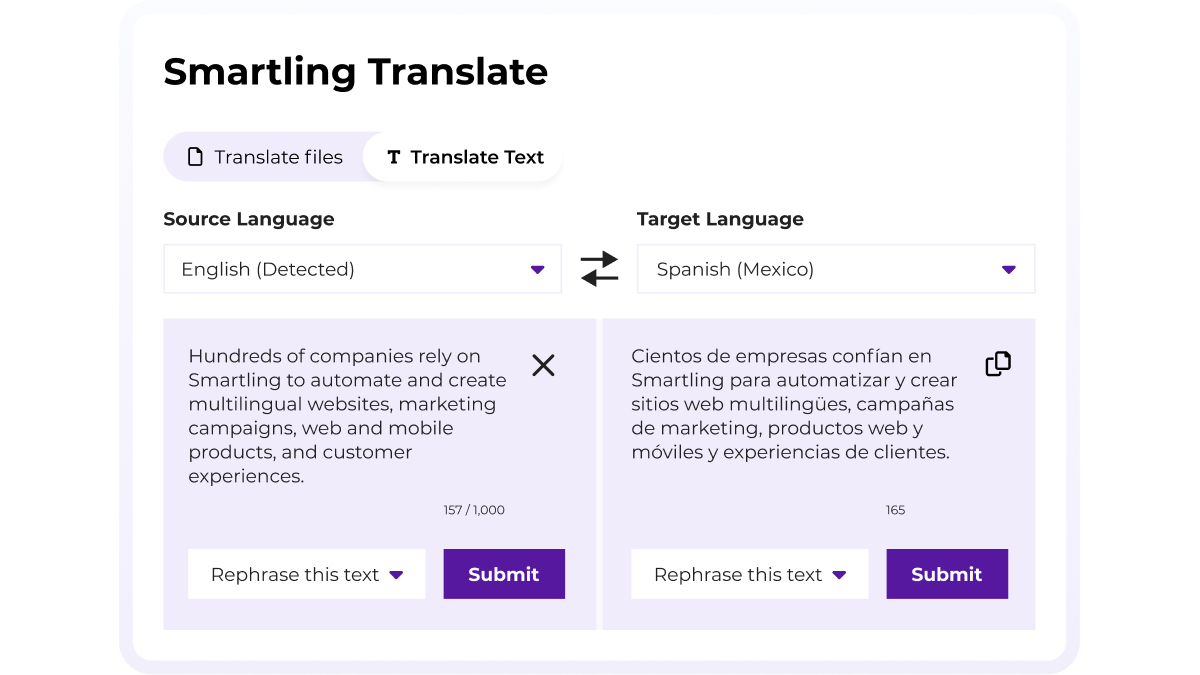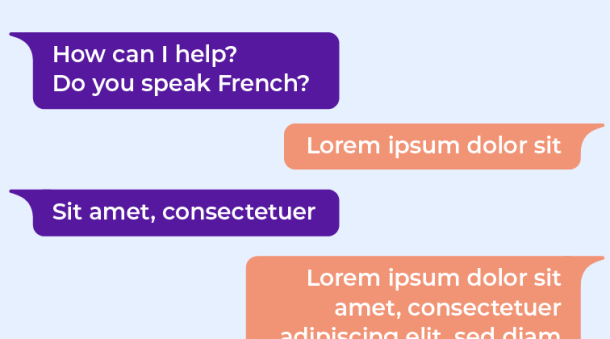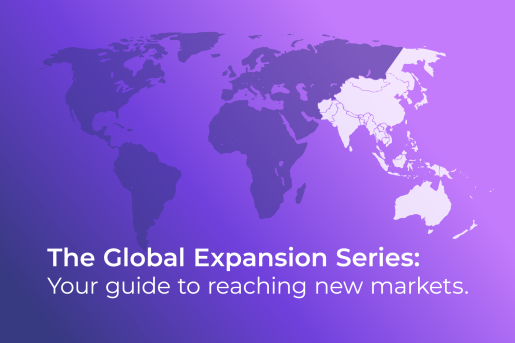ChatGPT — a natural language processing tool and AI chatbot—took the world by storm at the end of 2022. It’s still a hot topic more than halfway into 2023.

Across industries, there’s been a lot of talk about the best use cases, the limitations of GPT, and what impact it will have as technology advances. These conversations are taking place in the localization industry, too. Here’s what you need to know about GPT translation as a machine translation provider.
Can GPT-4 translate content?
GPT (Generative Pre-trained Transformer), is a type of foundational LLM (Large Language Model) that can generate content in over 90 languages, as well as machine translate text into dozens of different languages. The latest version of the GPT family is GPT-4.
What are GPT-4's capabilities?
GPT-4 is OpenAI’s most advanced language model to date. It has been trained on massive data sets and uses 1.7 trillion parameters, so it has broad general knowledge that makes it useful for many industries. It responds to prompts with greater accuracy than the previous versions and is also better at learning and imitating different writing styles. In addition, it can handle over 25,000 words of text, making it better suited for working with long-form content.
Not only is GPT-4 better for general tasks than its predecessor GPT-3.5, but it’s also better for language translation. As with anything, though, this AI technology has its limitations.
Three limitations of GPT
Before you get started with GPT translation, you need to be aware of some of its constraints.
1. Potential for inaccuracy
In our Reality Series episode on GPT and Large Language Models, Olga Beregovaya, our VP of AI and Machine Translation, explained some constraints of LLMs. “The models can sometimes hallucinate. We’ve observed factual inaccuracies and irrelevant sentences created or completed by large language models.”
In addition, Olga pointed out that LLMs “often lack awareness of what's happening in the realia of languages other than English.” There’s a significant imbalance in how much English language data these models have versus foreign language data. The result is non-English text or translations that aren’t as culturally relevant as they could and should be.”
Despite this, Olga emphasized that these are not reasons to avoid deploying large language models like GPT altogether. As long as you’re aware of these limitations and compensate for them, you can still use GPT to your advantage. We’ll talk about how a little later.
2. Security concerns
GPT-4 learns from user input (i.e., your chat history trains the model). Even though there’s now a setting to opt out of this, OpenAI may still review your chat history. GPT-4 without guardrails isn’t a secure way to translate text containing sensitive information. You’re much better off using a GPT-enabled translation portal like Smartling Translate, which is powered by Smartling’s LanguageAI™ platform and processes translations in a private, secure environment.

3. AI bias
Large language models like GPT are trained on data sets that reflect the biases of humans and, therefore, can affect the responses and content they generate. For example, machine translation engines are historically biased toward the male gender, and biases related to politics, race, occupation, and more also exist.
There are remedies for this issue, though, and they will only improve as teams like ours continue to make strides in overcoming them. Currently, we leverage targeted prompt engineering to mitigate bias in large language models. This allows us to correct it in the translation output for specific use cases, making translation quality more relevant.
How GPT is affecting the translation industry
Limitations aside, GPT has made a splash in the translation industry. But it’s not what many expected. Some feared that the rise of artificial intelligence—LLMs and machine translation engines included—would put human translators out of work. In reality, their role has changed.
Traditionally, translators have done most of the work themselves with the help of translation tools. Now, LLMs like GPT, a part of Smartling’s Neural Machine Translation Hub, can do the bulk of the work, with translators doing more prompt engineering and post-editing. In Olga’s words, there’s now a “mutual companionship [between translators and AI]. The translator is equal parts “prompts creator” and “validator of AI outputs.”
But it’s not just the role of translators that’s changing. More companies than ever are leveraging the power of AI technology in their translation management solutions.
How Smartling’s LanguageAI uses GPT-4 to boost quality by 350%
Smartling’s LanguageAI platform delivers high-quality translations instantly, using GPT technology to transform source and target text. In the GPT webinar, our Senior Director of Product showed how to use it to fix engineering glitches such as mismatched tags, placeholders or whitespaces and adjust formality in the source text. But Smartling’s tools go well beyond pre-edits.
Olga Beregovaya explained, “Where we've seen LLMs shine is in automated post-editing and improvement of machine-translated output. So you let NMT do what it's good at—customizability is so much higher with NMT than it is with LLMs. Then, using the LLMs for smoothing, you mitigate the risks of grammatical inaccuracy, morphological inconsistencies, and so forth. Combining the best of two worlds is indeed the way for us to mitigate potential issues.”
This is exactly what Smartling’s Neural Machine Translation Hub does. The NMT Hub uses Auto Select to choose the best machine translation engine for your content and locale pair. GPT will handle the smoothing of your translations. As a result, you’ll get translations that are up to 350% higher quality than what a single MT engine alone could produce. And these translations will be more relevant to your brand. Our President and Founder, Jack Welde, summed it up this way in our LanguageAI webinar:
“Smartling can incorporate a customer's style guide, their tone of voice, their preferences around gender and other inclusive terms, and their termbase and glossary. [It can] make sure that those terms are properly used and conjugated in machine translation output.”
For a closer look at how Smartling accomplishes this, check out this brief demo of our translation management system. It was rated the #1 Enterprise TMS for 15 consecutive quarters on G2!






